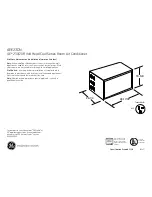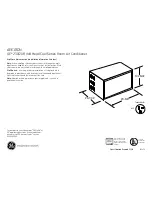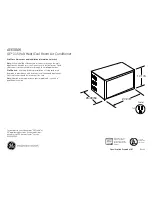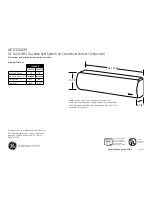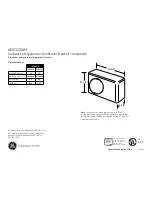
Manual 2100628
Page
21 of 24
COMMUNICATION DIAGNOSTICS
The motor is communicated through 24 VAC low
voltage (Thermostat Control Circuit Wiring).
1. Start with unit wiring diagram to confirm proper
connections and voltage (see Figure 11).
2. Initiate a demand from the thermostat and
check the voltage between the common and the
appropriate motor terminal (1-5). (“G” input
is typically on terminal #1, but refer to wiring
diagram.)
FIGURE 11
MOTOR LOW VOLTAGE CONNECTIONS
Manual
2100-467H
Page
23 of 23
FIGURE 11
TROUBLESHOOTING GE X13-SERIES ECM2.3
™
MOTORS
CONT’D.
Model X13 Communication Diagnostics
The X13 motor is communicated through 24 VAC low voltage
(Thermostat Control Circuit Wiring).
1.
Start with unit wiring diagram to confirm proper
connections and voltage (see Figure 11).
2. Initiate a demand from the thermostat and check the
voltage between the common and the appropriate motor
terminal (1-5). ("G" input is typically on terminal #1, but
refer to wiring diagram!)
a. If the low voltage communication is not present, check
the demand from the thermostat. Also check the
output terminal and wire(s) from the terminal strip or
control relay(s) to the motor.
b. If the motor has proper high voltage as identified
above (Motor not Running #1), and proper low voltage
to a programmed terminal, and is not operating, the
motor is failed, and will require replacement.
24VAC "R" Sig nal thro ug h
thermo stat o utp ut.
24VAC Co mmo n
24VAC Co mmo n
24VAC "R" Sig nal thro ug h
thermo stat o utp ut.
a. If the low voltage communication is not
present, check the demand from the
thermostat. Also check the output terminal
and wire(s) from the terminal strip or control
relay(s) to the motor.
b. If the motor has proper high voltage as
identified above (Motor not Running #1) and
proper low voltage to a programmed terminal
yet is not operating, the motor is failed and
will require replacement.

























